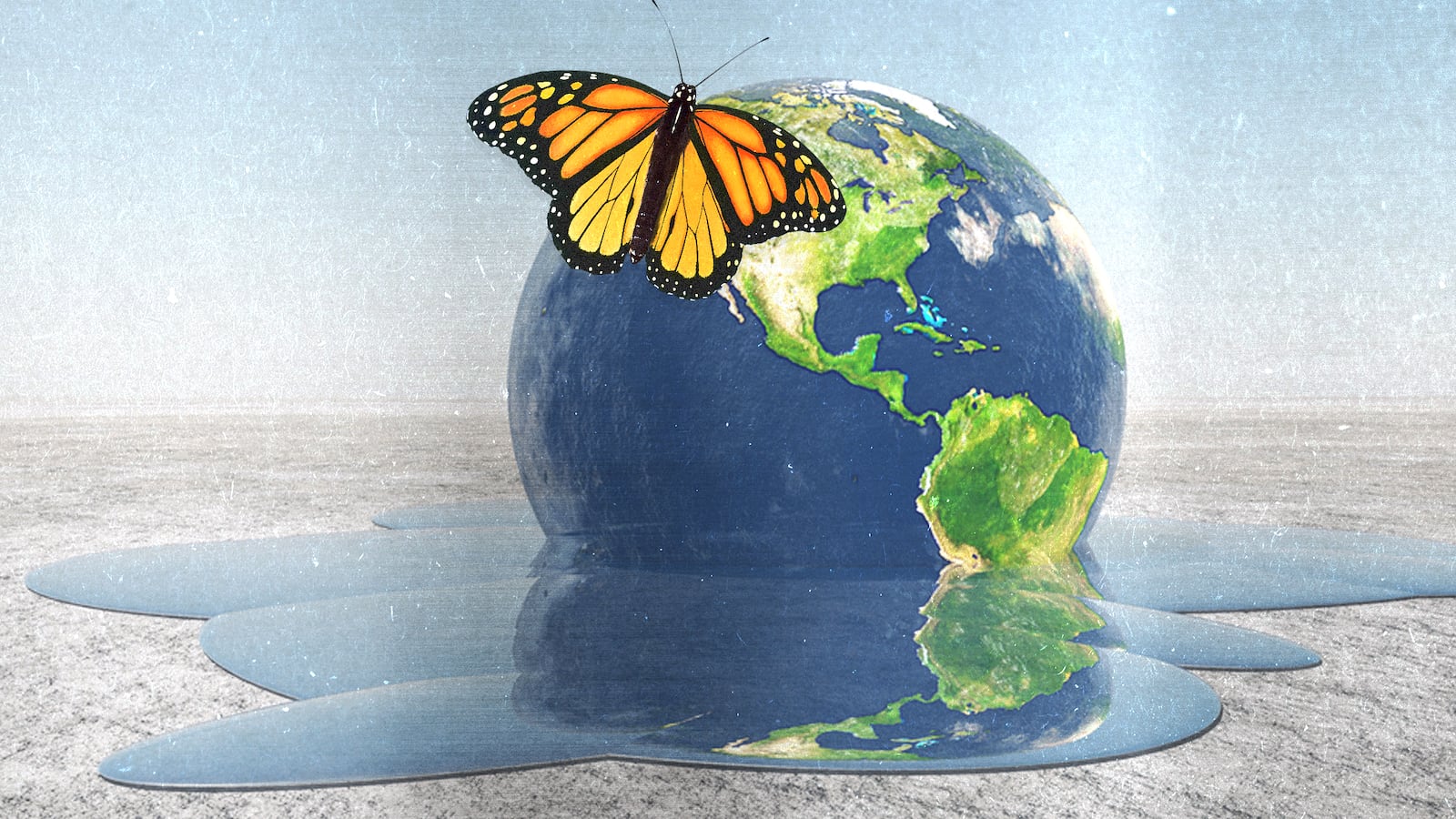The monarchs began their annual migration late this year, reaching New York City only in recent days.
One considerable contingent paused on Sunday by a patch of goldenrod on the sandy shore of Rockaway opposite a stretch of 92nd Street that has been named after firefighter who perished on 9/11.
With the butterflies and the street sign “Steven ‘Bells’ Belson Beach Way” came a reminder that the monarchs chanced to arrive early in 2001 and that thousands of them fluttered through the smoking ruins of the World Trade Center in the immediate aftermath of the attack, impossibly delicate amidst unimaginable destruction.
“Souls,” a surviving firefighter had softly said.
That year, as on all the other years, the monarchs had continued their journey to a forested cluster on a dozen mountaintops in Mexico. They generally arrive close enough to Nov. 2—Mexico’s Day of the Dead–that some people there have long viewed the monarchs as souls of those who have perished.
What those of us in New York who were so stirred by the sight of the monarchs passing through Ground Zero did not imagine was that as much as 80 percent of that year’s population would later be wiped out by a rare winter storm.
But if few monarchs appeared in New York the following year, more came the next and the next and the next. The monarchs were sometimes early, sometimes late, but they always appeared. They showed despite talk of them becoming an endangered species due to climate change and other winter storms, herbicides, a shrinking forest refuge in Mexico, and dwindling patches of the milkweed where they lay their eggs–that plant being the only one able to provide caterpillars critical nourishment.
And this fall, the monarchs appeared in notable abundance. Dozens of them clustered around the goldenrods just past the boardwalk at the the end of Belson Beach Way. A stiff seaward wind might have been expected to sweep them away, but they somehow managed to remain, closing their wings when they alighted as if in a kind of answered prayer.

“It’s been more than a few years since we have seen a monarch migration as promising as the one that is taking place,” Chip Taylor, professor of Ecology and Evolutionary Biology at the University of Kansas, wrote in the blog he keeps as director of the butterfly preservation and study group Monarch Watch.
The abundance seemed particularly heartening when you considered that the present boardwalk at Rockaway had replaced the one that Hurricane Sandy destroyed along with so much else six years ago this month. Other devastating hurricanes had since struck elsewhere with increasing frequency and force, causing even some climate change doubters to acknowledge that something might be going on after all.
The Belson sign was a reminder of a terrorist attack that we should have seen coming and could have prevented. Could it be that Sandy was a harbinger of another threat we have failed to heed?
Yet here they were, all these exquisite butterflies, on Sunday, repeating their impossible annual journey. The ones that had started north from Mexico in the spring had since died off and been replaced by as many as three succeeding generations, each of which had passed on the coordinates of the gathering place south of the border. They had now appeared in considerable numbers, just as they had on that sunny morning 17 years before, seeming to be indeed as delicate and eternal as souls.
A sobering dash of reality came from Professor Taylor in a phone conversation with The Daily Beast later in the week. He noted that the weather and temperature vary at various places along the monarchs’ route but the overall long-term trend is warm in Mexico and Texas.
“And that’s not good for butterflies,” Taylor said.
The trend is also toward greater moisture in the Pacific Northwest that eventually makes its way to the Mexican mountains. The moisture there becomes rain and, more devastatingly for the monarchs, snow. The surviving butterflies are then liable to face increased temperature as they begin to stir around Valentine’s Day and proceed from Mexico through Texas.
A serious drought along with high temperatures on the way north in 2012 had combined to severely curtail the number of butterflies in the generation replacing the one that had started out from Mexico. The population was so reduced as they subsequently headed south that some suggested the monarchs were approaching the edge of extinction.
“Go back to 2012,” Taylor said this week. “That's our future. And that means the population is really going to crash.”
Never mind that the weather turned more favorable after 2012 and that the population rebounded somewhat. Never mind that the numbers were even better this spring and summer and fall. Never mind that, as Taylor noted, “This is an especially good year.”
To listen to Taylor, the 2018 bounty of butterflies is a lesson in why variables in a particular year should not lead you to discount the threat of climate change. The long-term trends and the accumulating threat remain.
“We may never see a population this big ever again,” Taylor said. “The fate of this butterfly does not look bright. Of course, it doesn’t look good for us either.”
In mentioning the threat to our own species, Taylor noted the recent United Nations report warning that we need to take action on climate change before it is too late.
Meanwhile, even as he warns us not to be fooled into complacency by fluctuations, he advises us to appreciate the remarkable survivors such as circled the goldenrod in Rockaway.
“Enjoy them now,” he said.







